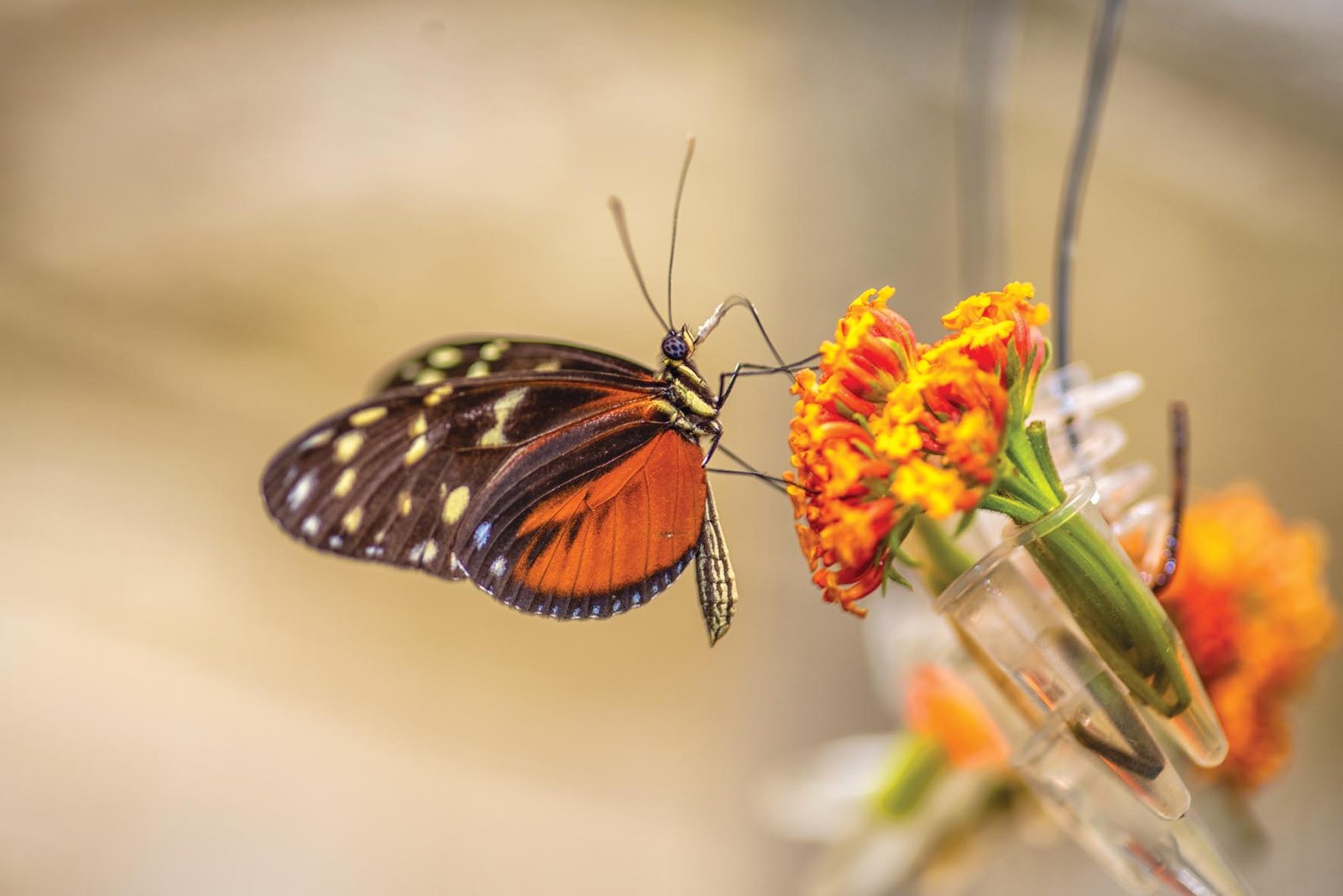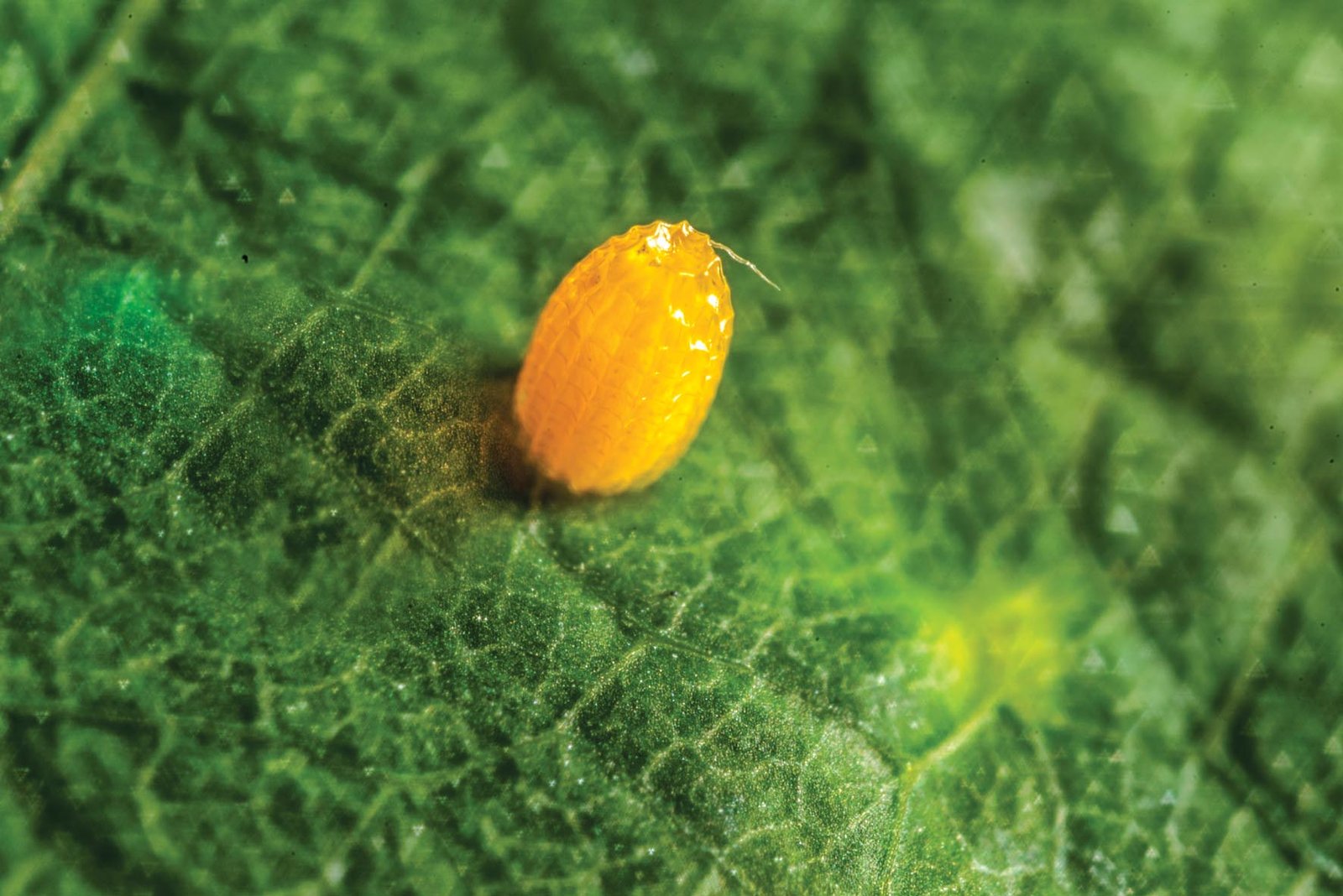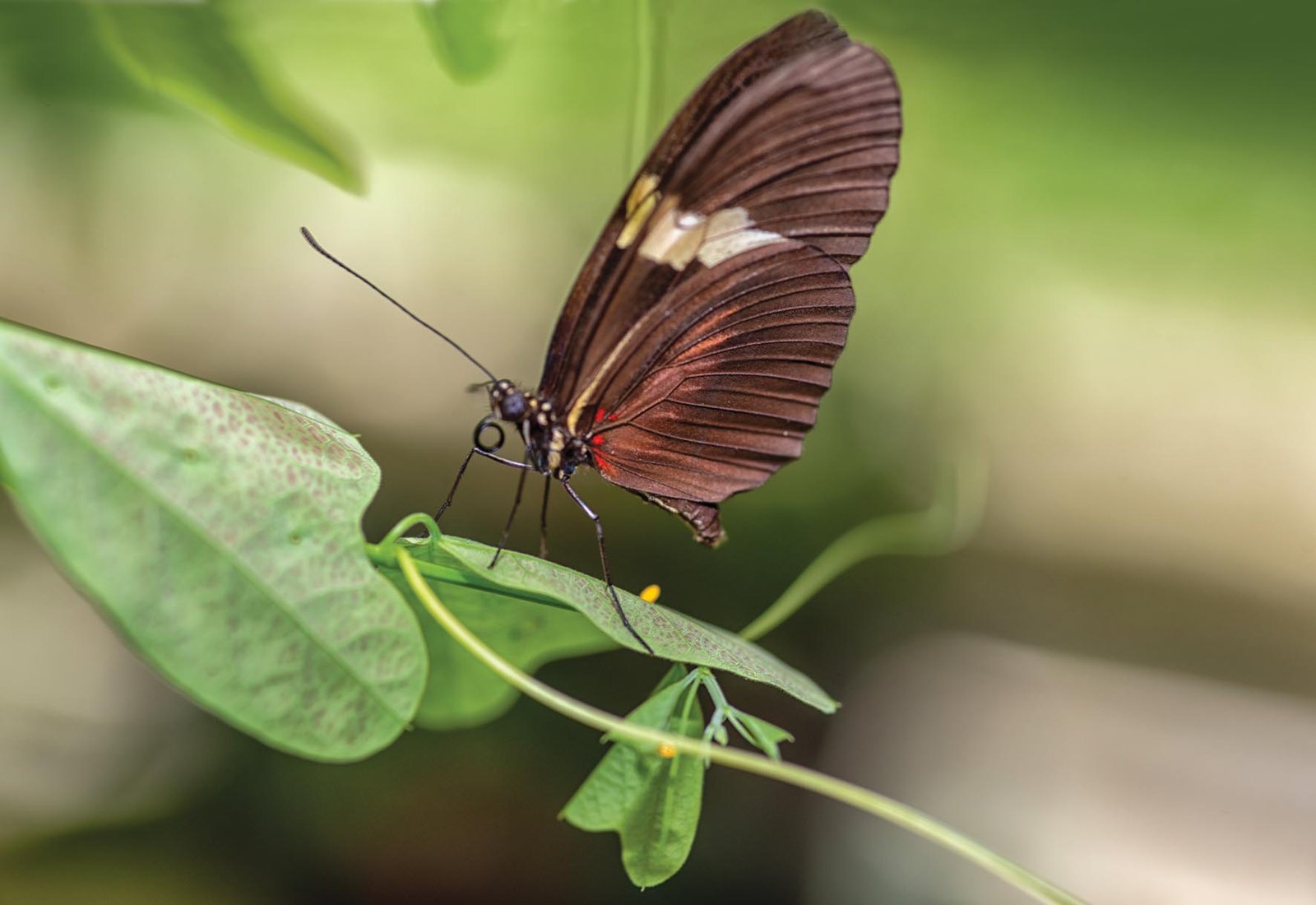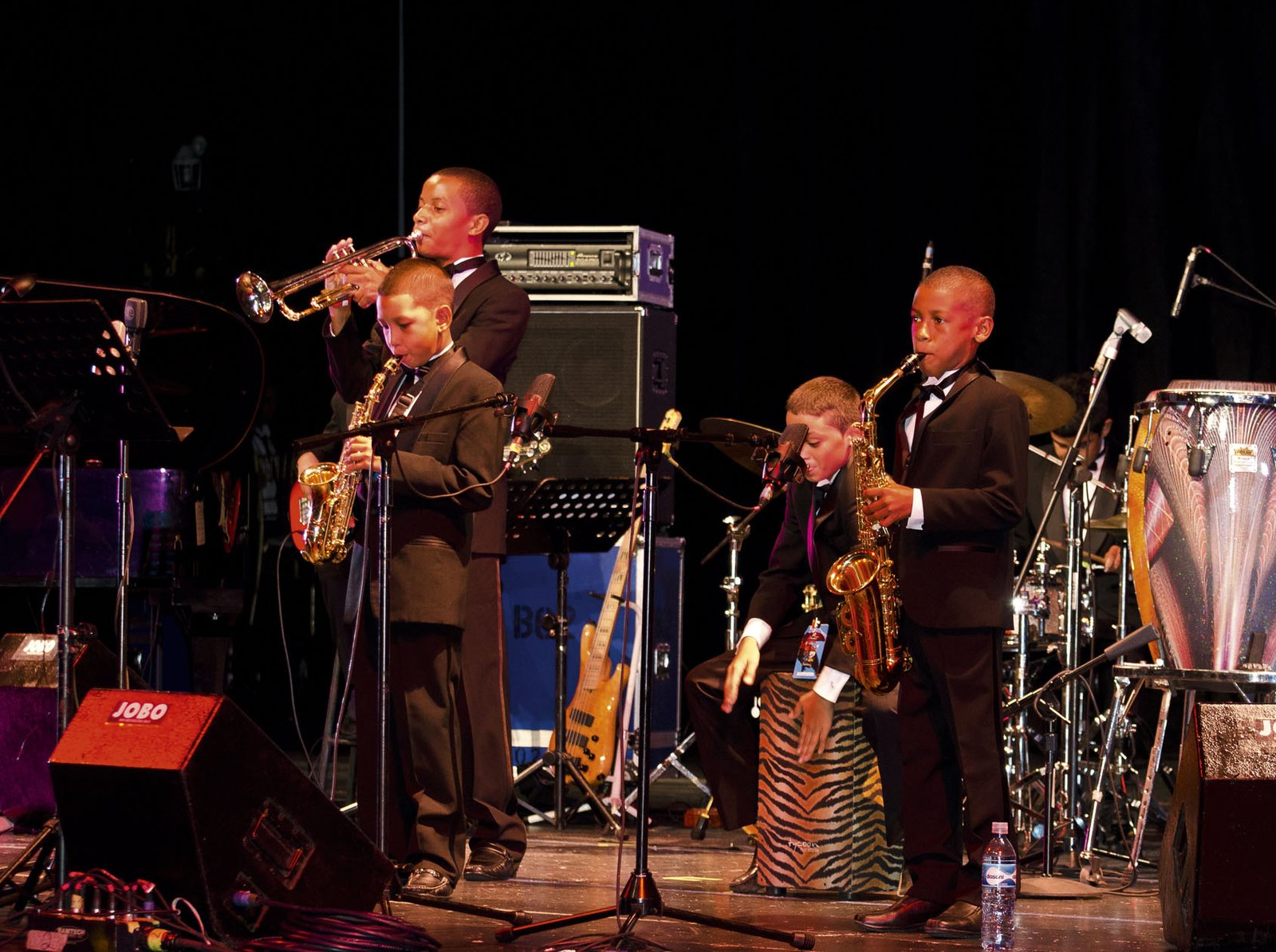
A Butterfly’s Life
Text and Photos: Javier A. Pinzón
A genetics and behavior laboratory dedicated to the study of butterflies (mainly Heliconius) sits amidst a tropical jungle on the banks of the Panama Canal. What is special about these butterflies and why are they the subject of such intense study? To answer this question, today I’m meeting with Denise Dalbosco Dell’Aglio, a post-doctoral student at the Smithsonian Tropical Research Institute.
Born in Porto Alegre (Brazil), Dr. Dell’Aglio received her B.S. and Masters in biology from the Federal University of Río Grande del Sur and her Ph.D. from the University of Cambridge (England). She has worked with butterflies, particularly Heliconius, since her first forays into biology. She was very interested in ecology and the interaction between animals and plants and the Heliconius butterflies’ intimate relationship with Passiflora captured her attention. She is currently working with two species that have different habits even though they are related. The first step in her current research is to define the unique behavior of each species, after which she will perform a genetic analysis of the behavior in an attempt to find a genetic reason for the differences.
One of the topics Denise researches at the Butterfly Ecology and Evolution Research Lab is the science behind butterfly coloration. The color patterns of Heliconius butterflies is a trait that involves both ecological adaptation and mate choice. Different regions have different colors, so the lab needs to keep Heliconius of various species and from different places. They study the gene sequences of both parents and then look at the gene sequence of first generation of hybrids, teasing out which gene is responsible for each color. Surprisingly, few genes are controlling all diversity seen in Heliconius. This all began when hybrids were first found in nature and scientists realised they could cross different species to study speciation around the 1950s.

Heliconius
As we tour the butterfly house, Denise explains that Heliconius is widespread throughout Latin America. Depending on the region, species and sub-species show a dramatic diversity of color patterns. 46 species of Heliconius live in the neotropics; they are known as passion flower butterflies, since they lay their eggs exclusively on Passiflora plants, including maracuyá, or passion fruit.
The lab raises butterflies native to Panama, Costa Rica, Ecuador, and Colombia. The researchers hope to learn more about the more than four hundred patterns that appear on butterfly wings in combinations of red, orange, yellow, black, and white.
According to Denise, these butterflies can lay from five to ten eggs per day, depending on the plant and the butterfly. Some lay just one egg on the tip of the leaf, while others lay several. I look around as the scientist explains that butterflies have different strategies: some species prefer to leave fewer larvae on the same plant to ensure there is enough food and prevent their offspring from eating each other; other butterflies, whose larvae do not cannibalize each other, prefer to lay several eggs at the same time, thus increasing competition. To facilitate this process, the lab changes the plants every two or three days, encouraging the butterflies to lay more eggs.
Another factor that makes these butterflies special is their diet; rather than limiting themselves to nectar like other butterflies, they also feed on pollen. Pollen has many amino acids and proteins, which increases butterfly lifespan and allows them to lay more eggs (they can lay eggs throughout their lives); the butterflies develop larger brains, making them more intelligent and ideal for behavior studies.

Lifecycle
These butterflies are found only in well-preserved forest areas that provide access to their host plant, the Passiflora. A butterfly will spend three to four days as an egg, twenty days as a larva (depending on temperature and food source), and from five to seven days as a pupa. Here in the lab, they need to be fed every day with freshly cut flowers or sugar water. The feeding straws for the sugar mix must be red, yellow, or orange, since butterflies associate these colors with food.
A second unusual trait found in some species of Heliconius is a form of mating known as pupal mating. The males of some species seek out female pupae on the host plants; they settle on the plants a day before the pupae emerge and then mate with the females the following morning as they emerge from the pupal case.
Mimicry
Heliconius butterflies use Müllerian mimicry to protect themselves. This evolutionary strategy consists of discouraging predators by having the same colors and patterns as a dangerous species. In this case, they use aposematic colors, i.e. black, yellow, and red, which indicate danger. The best example of aposematic coloration is found in bees, whose enemies have learned that yellow and black are dangerous.
These butterflies are preyed upon largely by insectivorous birds, particularly when the chicks are learning to differentiate edible from inedible foods. As they mature, the birds learn that butterflies with these color patterns can be poisonous and should be avoided.

Plant-Butterfly Interaction
The host plant and these butterflies have formed an intimate relationship. As we walk toward the greenhouses, Denise explains that the Passiflora defend themselves against butterflies, since larvae can strip the plants of their leaves. For example, some plants are slightly poisonous; others have yellow-tipped leaves whose resemblance to eggs discourages the butterfly from laying eggs there. The Passiflora can also change the shape of their leaves in order to confuse the butterfly into thinking it is a different kind of plant or they can increase the number of extra-floral nectaries (nectar-producing glands) on the leaves; the glands attract ants, which protect the plant from butterfly larvae. One of Denise’s studies showed that the plant increased the number of nectaries when many butterfly larvae had been deposited.
A Tough Job
Field observation is not enough if you wish to study butterflies and their interactions with host plants. You need a butterfly house where every factor can be controlled and supervised by dedicated and qualified personnel. At the Gamboa site, Óscar Paneza is in charge of planting the plants, fertilizing them, making them available to the butterflies, and changing the plants at the right time. He also feeds the Heliconius butterflies with flowers and through feeding straws. He builds the butterfly houses, checking that there are no ants or spiders anywhere and that everything is in good condition. Óscar says that the hardest part of his job is ensuring that the butterflies reproduce, since they will not do so unless they are well adapted to their surroundings. Aside from performing their daily tasks, the team meets two times a week for a “Potting Party,” during which they plant new plants and care for the butterfly houses.



